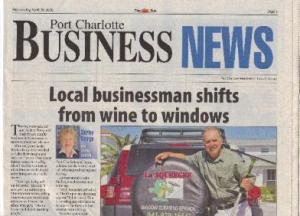 When talking about the benefits of broadband, it’s easy to overlook how broadband has become the glue that brings people and communities together. This is becoming particularly important for rural communities but matters to people everywhere.
When talking about the benefits of broadband, it’s easy to overlook how broadband has become the glue that brings people and communities together. This is becoming particularly important for rural communities but matters to people everywhere.
Rural communities have been rapidly losing other forms of media that were the focal point in the past. 2004 was the peak of the newspaper business in terms of readership and revenues. Since then, the number of journalists has been cut in half. In the last fifteen years, we’ve lost more than 20% of all newspapers, and many remaining papers are just barely hanging on financially. Over half of the 3,143 counties in the country now only have one newspaper, which in the majority of cases means only a small weekly paper. In a recent count, over 200 counties have no newspaper.
We’ve also lost a huge number of local radio stations. Lost is not entirely the right word since many stations haven’t gone off the air but stopped being local. Local radio stations became endangered when Congress introduced deregulation into the radio business in the Telecommunications Act of 1996. Since that time, two-thirds of all radio stations are owned by ten parent companies that have gobbled up local radio stations. Instead of local news and content, the conglomerates pipe in national content, which also allows them to eliminate almost all of the staff at local stations. The big companies seek national advertisers, and communities don’t even hear ads for local businesses any longer.
The Internet has stepped in to fill some of this void. I see this directly when I help communities conduct broadband surveys and see how they go to get the word out. A lot of rural communities now have local Facebook forums (I note that I haven’t yet met anybody who has started to use the new name Meta). The local social media groups are popular, and I’ve seen communities drive a thousand survey responses through a local Facebook page. But not every local community has taken this approach, probably due to some of the downsides with social media.
Community life in one community I worked in recently all used a website created by the local radio station. I’ve worked in communities where church websites seem to be the predominant forum for local news.
In cities, we have more ways to keep up with local events. My own city has several newspapers, a few local radio stations, and one local TV station. In cities, the trend for the Internet is to get hyperlocal news directly in the neighborhood. There are a lot of people who use the Nextdoor app. While this is like other social media in that there’s a lot of gossip and squabbles, this is also the place to find out about crimes or events that you’d never know about otherwise.
One of the benefits of the Internet that is rarely talked about is the ability to become part of a larger community. I have a good friend I met strictly through the Internet who lives in Salt Lake City. I have a friend whose son is a competitive gamer, and his daily community is other gamers in Japan, Korea, Thailand, Vietnam, China, and Ukraine. My wife has developed friendships across the country when participating in forums on her various hobbies and interests. I’m not sure why we don’t mention ‘finding one’s tribe’ as one of the most important aspects of the Internet.
It’s easy to be cynical, and write off social media as being entertainment, but doing so ignores the real connections people make on the Internet. And yet, I’ve never seen any list of Internet benefits that includes the power of the Internet to provide local news and a sense of community.

